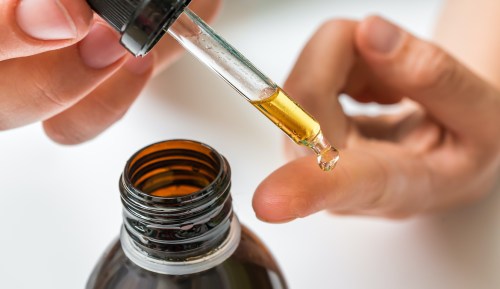A Product Formulator’s ‘1 Percent Rule’ Will Keep You From Buying Skin Care That Doesn’t Work
A cosmetic explains why following the "1 percent rule of skin care" is one of the best ways to ensure you aren't wasting money on products.

I’m going to let you in on a little secret: Some of the expensive skin care you’re shelling out for isn’t worth the money. Because the cosmetics industry isn’t regulated by the Food and Drug Administration (or FDA), there’s no entity to double check the cost that brands are slapping on their products, which means that sometimes you’re paying for pricy packaging and not much else. However, educating yourself on the “one percent rule” of skin-care labels is one way to avoid wasting your hard-earned money on overpriced products.
Experts in This Article
Nevada-based cosmetic chemist and founder of Perfect Image
Skin-care products list ingredients in order of concentration, which means that the closer an ingredient is to the front of the list, the more of it that’s actually in the formula. “The first ingredient is the one that has the most amount in the product, whereas the last one listed has the least,” Paul Pestano, senior database analyst at the Environmental Working Group (EWG), a nonprofit organization that provides information and research on ingredients in its Skin Deep database, previously told Well+Good.
There’s an exception to this, though. “There’s a concept in cosmetic chemistry called the one percent line,” says Javon Ford, a cosmetic chemist based in Los Angeles, in a video posted to TikTok, explaining that any active ingredient listed to the right of this “line” isn’t going to give you much bang for your buck, because it’s barely there at all. “This is important because if you’re paying for ingredients like vitamin C or niacinamide, if they’re listed to the right of the line they’re not really in the formula, and it’s basically a waste of money.”
This Parisian Skincare Brand Is Launching in the United States for the First Time—Here’s What a Derm Wants You to Know

We’re Calling It: Cleansing Balms Are the Face Wash of the Future—Here Are 3 to Add to Your Cart

This Is the One Product That Scarlett Johansson Always Keeps in Her Purse and on Her Bedside Table

Unfortunately, there’s no actual, physical line to denote where these under-one-percent-concentrated ingredients start, so you’ll have to do a little bit of detective work to figure it out for yourself. According to Ford, phenoxyethanol, parabens, disodium EDTA, sodium benzoate, and potassium sorbate will never be present at a concentration higher than one percent, and in general, fragrance, essential oils, and extracts won’t either. This means that there’s a pretty good chance that anything listed after these ingredients on the label are formulated at less than one percent, too.
That said, it’s also important to keep in mind that while you definitely don’t want to be spending on a vitamin C or glycolic acid serum that’s only got one percent of the hero ingredient in it, you also don’t need the highest of the high concentrations of an active in order for a product to work. “Higher percentage does not always equate to a more effective product,” David Petrillo a Los Angeles-based cosmetic chemist and the founder of Perfect Image Skincare, previously told Well+Good. “Sometimes too much of an ingredient can be bad, especially if someone is allergic or sensitive to a particular ingredient.” Plus, there’s the fact that your skin can’t absorb certain ingredients at ultra-high concentrations, which means you would never want to invest in, say, a 100 percent glycolic acid serum (which doesn’t exist, but if it did, would burn your skin off).
Now that you’re armed with the knowledge you need to be the Sherlock Holmes of skin care, you’ll never waste your money on products that don’t work again.
Press play on the video below to see which products a derm says are worth investing in.
Oh hi! You look like someone who loves free workouts, discounts for cult-fave wellness brands, and exclusive Well+Good content. Sign up for Well+, our online community of wellness insiders, and unlock your rewards instantly.
Sign Up for Our Daily Newsletter
Get all the latest in wellness, trends, food, fitness, beauty, and more delivered right to your inbox.
Got it, you've been added to our email list.







